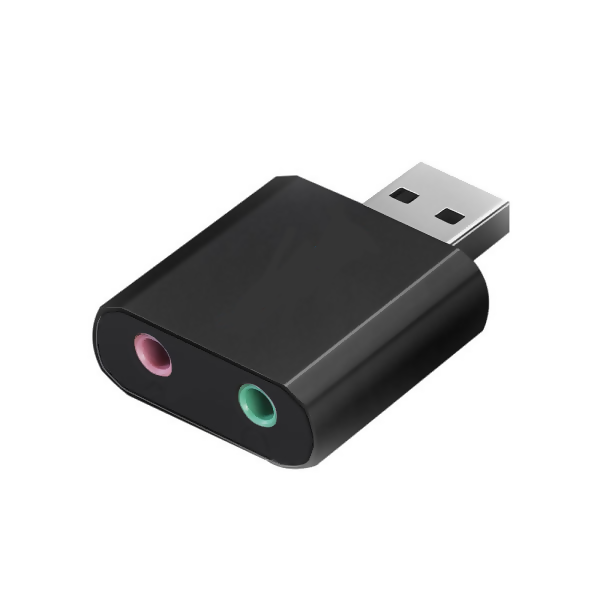One important thing to know as we begin this guide is that Microsoft ended support for Windows Vista on 11 April 2017 which means that Vista no longer gets software and security updates.
So, if possible, we recommend upgrading to a newer Windows version in order to benefit from Microsoft’s full support especially regarding some widespread issues like the microphone problem.
However, if you have an issue right now, we're here to help.
Down below, we will propose a few different scenarios so that you choose the one similar to yours and then go directly to the solution for it.
Scenario 1: Check to see if your microphone is currently working.
Scenario 2: You do see green bars, but your computer can’t detect your voice.
Scenario 3: Your microphone is detected, yet no green bars when you speak.
Scenario 4: Your microphone doesn’t show up in your recording devices list.
If you can’t decide, just follow the guide and at some point, your problem will be solved.
Scenario 1: Check to see if your microphone is currently working.
Click the Start button in order to open the start menu and then click on Control Panel.
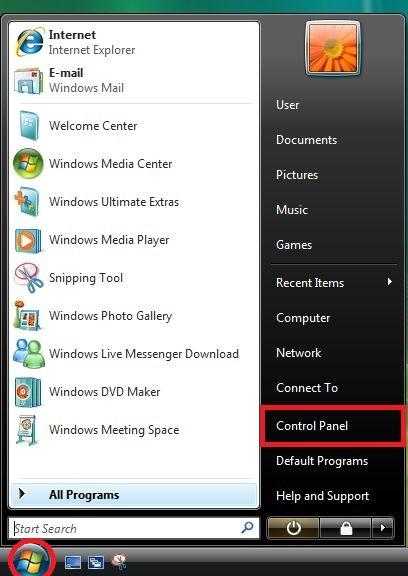
From the Control Panel, find and click on Hardware and Sound..
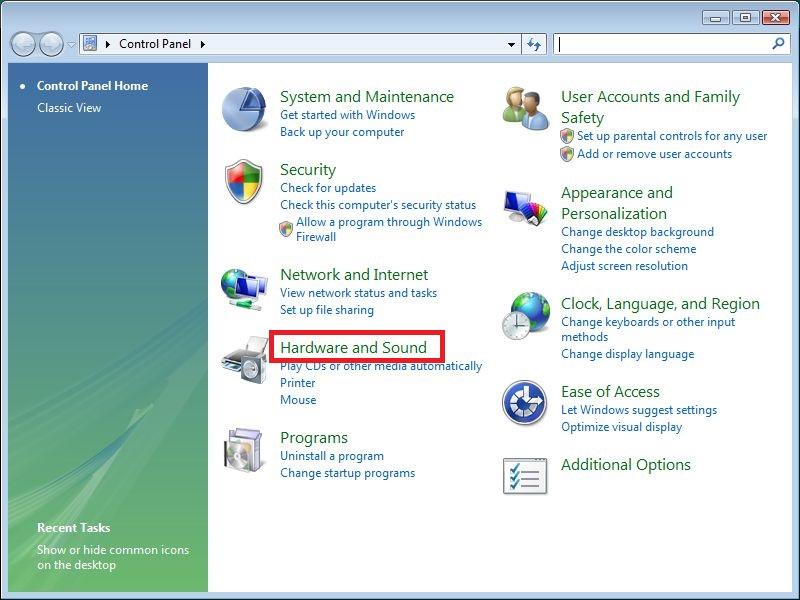
Click Sound in order to launch the sound control center.
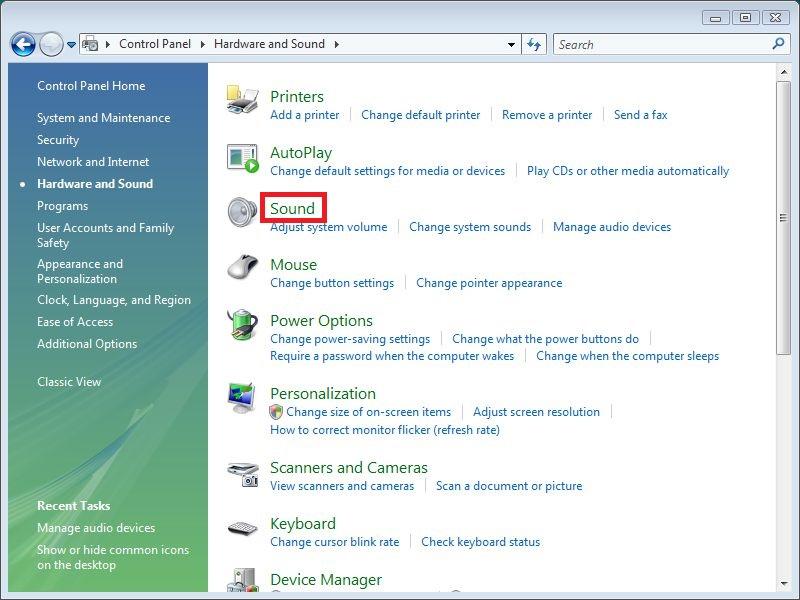
In this moment, the Playback tab will be open by default but since we are investigating the microphone, kindly switch to the Recording tab.
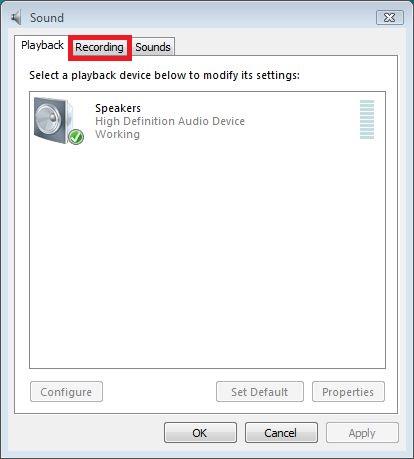
Now you will see a list of your microphones. Try speaking into your microphone and see if any green bars rise while you talk. If you do, then this microphone is the one you’re using, and it’s recognized by your computer.
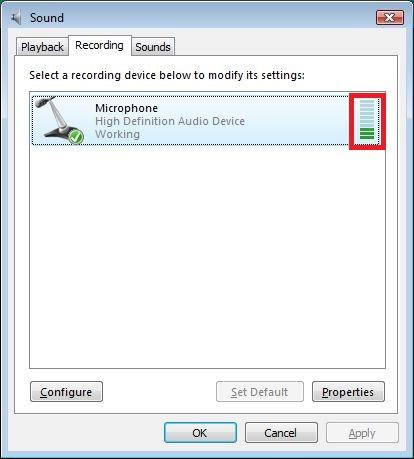
Scenario 2: You do see green bars, but your computer can’t detect your voice.
Therefore, you should start by setting this microphone as the default recording device of the computer by right-clicking on it and then click "set as Default Device" and only then, your computer will consider it your go-to microphone whenever it needs to get your voice from now on.
Scenario 3: Your microphone is detected, yet no green bars when you speak.
Right-click on your microphone and choose Set as Default Device.
Note that if you have only one recording device in the list, you won’t be able to find this option in the list because the listed device will be set as the default recording device and you are not allowed to change that unless you connect another one. So simply skip to the next step.
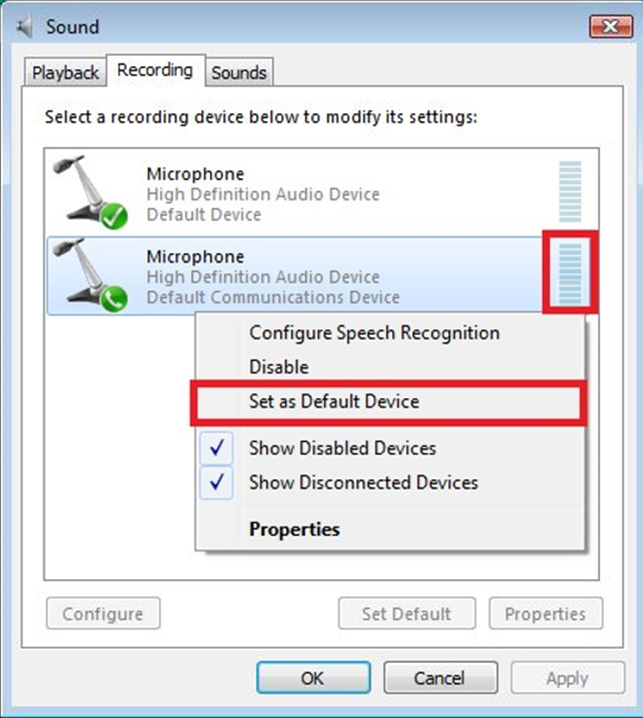
Double-click on the device and in the window that pops up click on the “Levels” tab.
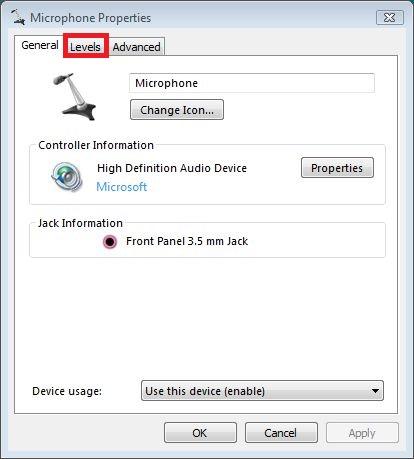
Drag the "Microphone" slider all the way to the right, until the level is set to ‘100’. Drag the "Microphone Boost" slider in order to make it above average, maybe all the way to the maximum if needed.
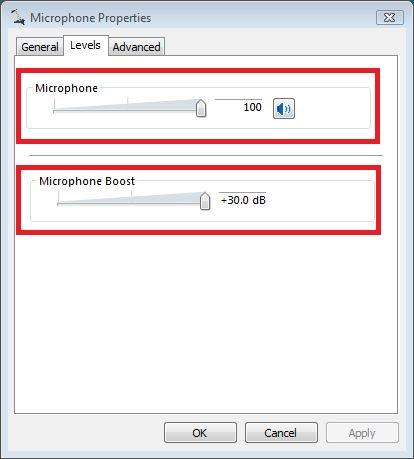
Now click on the "Advanced" tab and uncheck this option "Allow applications to take exclusive control of this device". This will guarantee that no application is taking control over your microphone and muting it on purpose. Afterwards, click "Apply" then "Ok".
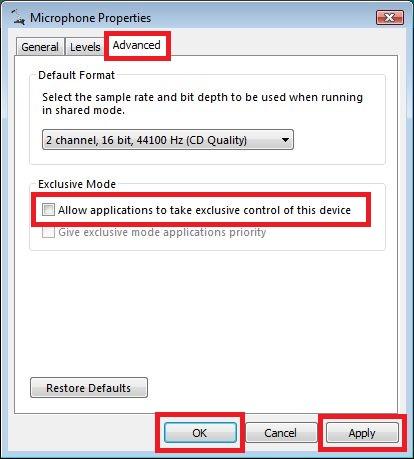
Now check again if you see green bars rising when you talk into the microphone: if you do, your mic is now properly configured.
Normally The program you're working with might be listening to the wrong microphone. Try to explore its audio settings and try to change its default recording device. If you are still stuck, you should contact its support team to guide you through the configuration.
Scenario 4: Your microphone doesn’t show up in your recording devices list.
If a new microphone shows up, give it a try by setting it as default and increasing its level and boost as explained before. The second possibility is a problem with your Audio driver, and the way to solve this is reinstalling the audio driver. Note that Windows Vista doesn’t have an automatic troubleshooter, it’s more like a help document which will give you some tips and steps that you need to perform yourself.
Right-click on your Computer icon on your desktop and choose Manage.
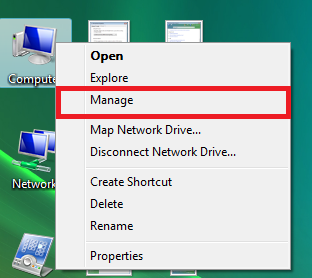
Once the Computer Management app pops up, click on Device Manager from the left pane and then expand "Sound, video and game controllers", right-click on "High Definition Audio Device" and then click "Update Driver Software …".
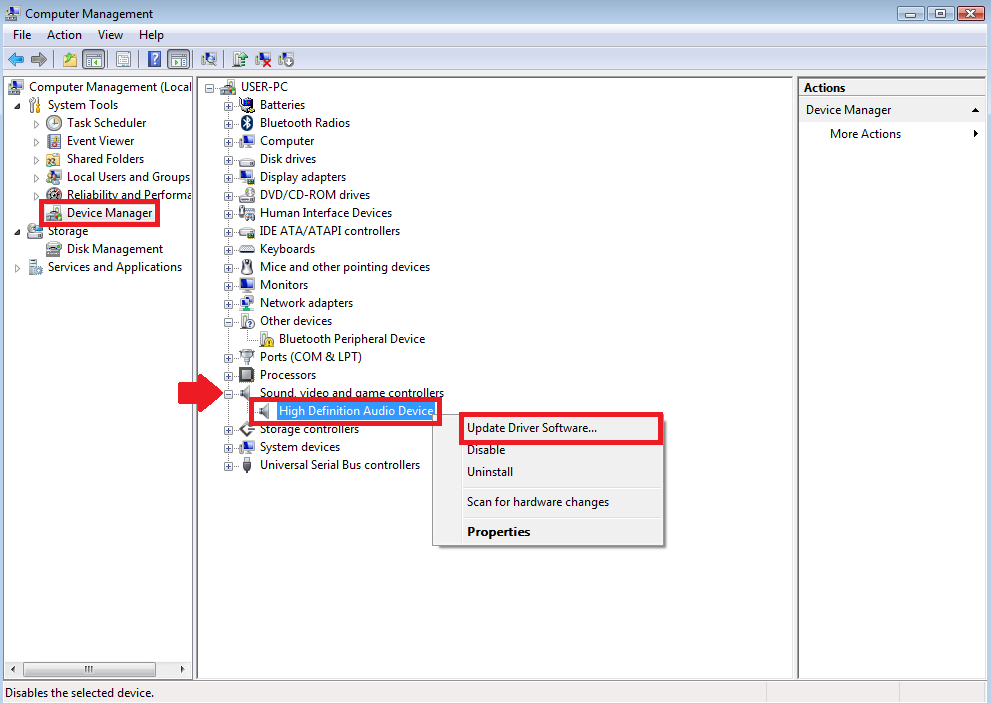
Now choose to "Browse my computer for driver software".
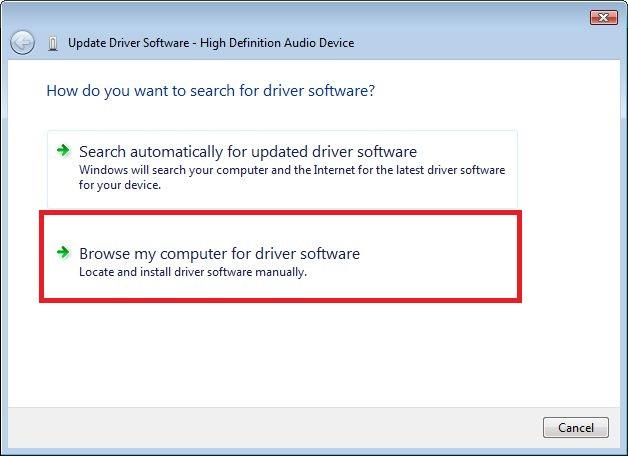
Down below, you will find and option: "Let me pick from a list of device drivers on my computer".
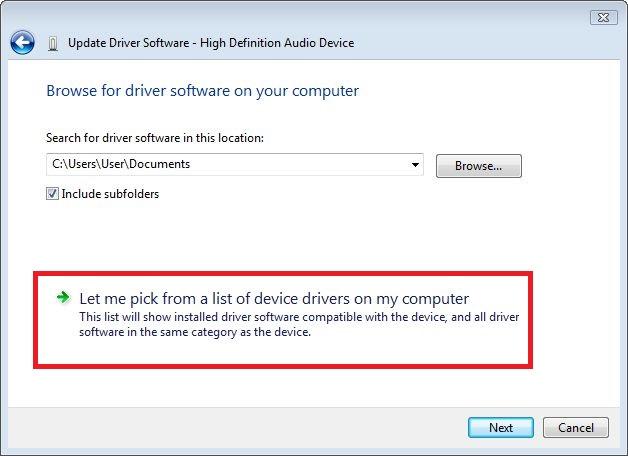
Make sure to check "Show compatible hardware", then select "High Definition Audio Device" and finally click "Next".
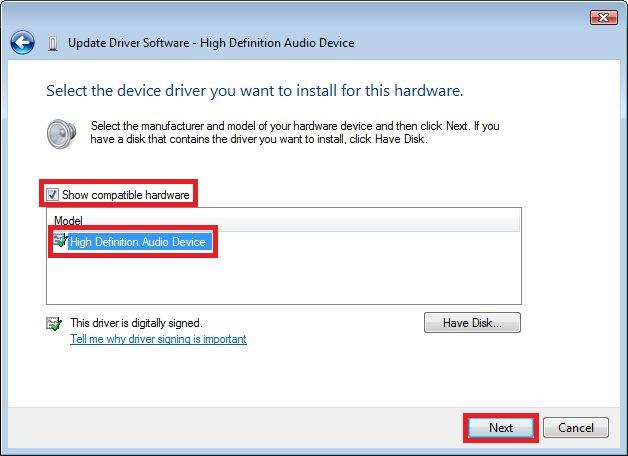
If you get this warning, just click "Yes". You have nothing to worry, really, since your microphone hasn’t been working anyway!
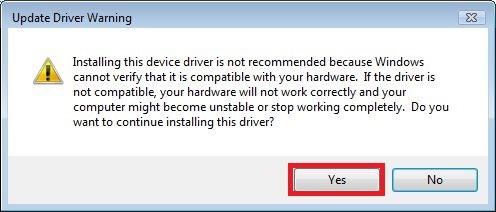
That's it, the driver is successfully installed. You can now click "Close".
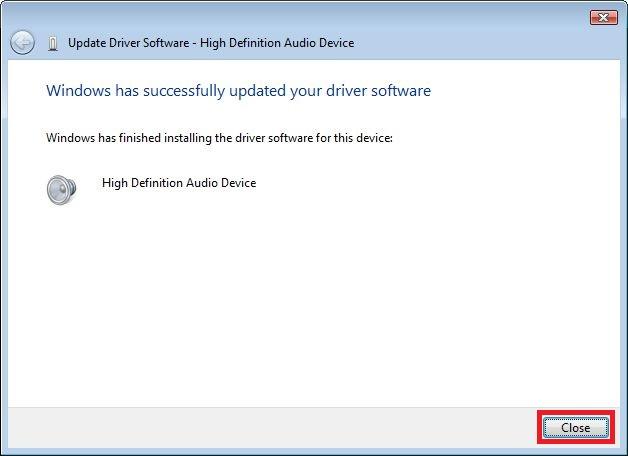
It's highly recommended that you reboot your computer after any driver changes: some changes won’t become effective until you do.
Scenario 5: Access the Vista troubleshooter.
Click the Start button and click on Help and Support in the bottom-right corner of the start menu.
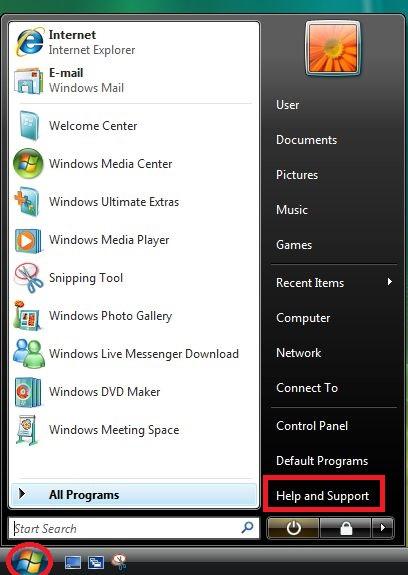
Now click on Troubleshooting.

Scroll down to the bottom and then you will have two sections: Troubleshoot driver problems (we already discussed that in our guide) and Troubleshoot Sound problems.
Take a look at these parts and read the instructions if you want to dive deeper into it, but we have already covered all the important areas.
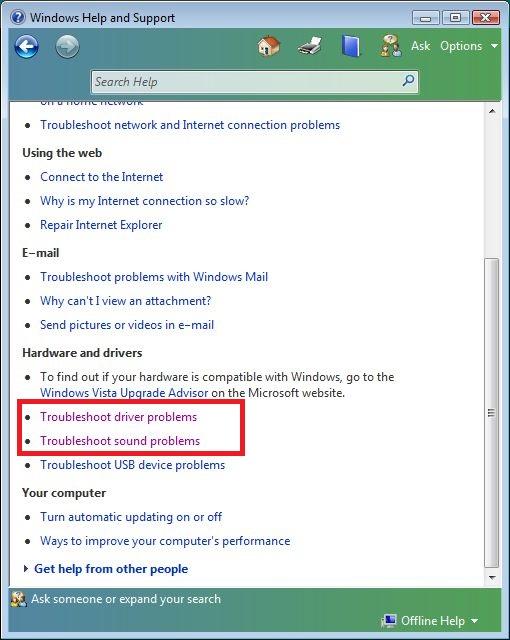
Scenario 6: Final tips
Make sure to use the right microphone/headset that's compatible with your device:
- 2x1 3.5 mm jack (Audio + microphone) is compatible with computers that have only one headset port.
- 2 separate 3.5 mm jacks (one for audio and one for microphone) are compatible with computer having two separate ports: one for audio and one for the microphone.
Make sure you didn't mute your microphone by mistake, some microphones have physical volume sliders or mute button.
If you think the problem is with your sound card, or if you tried all the steps and nothing worked, you can always buy an external sound card which can be connected to your computer via USB and you can then plug your microphone to it.
